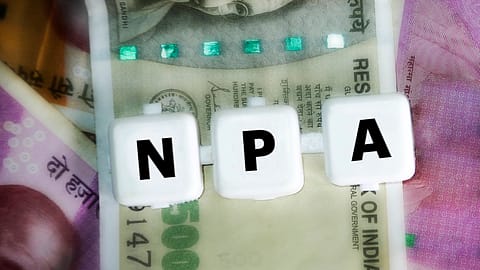Public sector banks’ gross NPA ratio reduces to 2.58% in FY25 from 9.11% in FY21: Govt
The MoS Finance informed the Rajya Sabha that the government and the RBI have introduced a slew of measures to make the process of reducing and recovering non-performing assets more stringent and transparent

Gross non-performing asset (NPA) ratios of public sector banks have dwindled from 9.11% in March 2021 to 2.58% in March 2025, Pankaj Chaudhary, the Minister of State of Finance, told the Rajya Sabha in a written response on Tuesday, according to a press release by the Ministry of Finance.
As of 31st March, 2025, the gross NPAs of public sector banks stood at about ₹2.83 lakh crore, compared to ₹6.16 lakh crore, as of March 2021. The minister also informed the upper house of the Parliament that the government and the Reserve Bank of India (RBI) have taken comprehensive measures to reduce and recover NPAs. These include a shift in credit culture, with the Insolvency and Bankruptcy Code (IBC) fundamentally altering the creditor-borrower relationship, removing control of the defaulting company from promoters/owners, and barring wilful defaulters from the resolution process. To make the process more stringent, a personal guarantor to a corporate debtor has also been brought under the ambit of the IBC.
The government and the RBI have also amended the Securitisation and Reconstruction of Financial Assets and Enforcement of Security Interest Act, 2002, and the Recovery of Debts and Bankruptcy Act to enhance their effectiveness. The pecuniary jurisdiction of Debt Recovery Tribunals (DRTs) was increased from ₹10 lakh to ₹20 lakh, enabling DRTs to focus on high-value cases and resulting in higher recoveries for banks and financial institutions.
Public Sector Banks have set up specialised verticals and branches for managing stressed assets, facilitating effective monitoring and focused follow-up of NPA accounts, which enables quicker and improved resolution/recoveries. The deployment of business correspondents and the adoption of the Feet-on-the-Street model have also boosted the recovery trajectory of NPAs in banks. The RBI issued the Prudential Framework for the resolution of stressed assets to provide a framework for the early recognition, reporting, and time-bound resolution of stressed assets, with a built-in incentive for lenders to adopt a resolution plan early.
As per RBI guidelines, banks have a board-approved policy in place for valuing properties, which is conducted by professionally qualified, independent valuers. The RBI mandates banks to have a procedure for empanelling professional valuers based on prescribed minimum qualifications and to maintain a register of an approved list of valuers. Valuation of fixed assets is conducted before the sanction of a loan to a borrower as part of the appraisal process and before the sale to recover dues under the SARFAESI Act, 2002.
To maintain transparency, banks for properties valued at ₹50 crore or above are required to obtain a minimum of two independent valuation reports. Upon enforcement of a security interest for an NPA account, the bank takes possession of the property and obtains a valuation from an approved valuer before disposing of it. The RBI, in its guidelines on the sale of stressed assets by banks, has stated that the use of e-auction is a desirable mode for the sale of properties, as it would attract a wide variety of borrowers and enable better price discovery.
As per the RBI Master Circular on Income Recognition, Asset Classification, and Provisioning (IRAC) norms dated July 1, 2015, collateral such as immovable properties charged in favour of the bank should be valued once every three years by empanelled valuers. Furthermore, the Joint Lenders Forum (JLF) guidelines, issued by the RBI in February 2014, empower banks to seek an explanation from valuers who overstate the value and, henceforth, report their names to the Indian Banks Association (IBA).